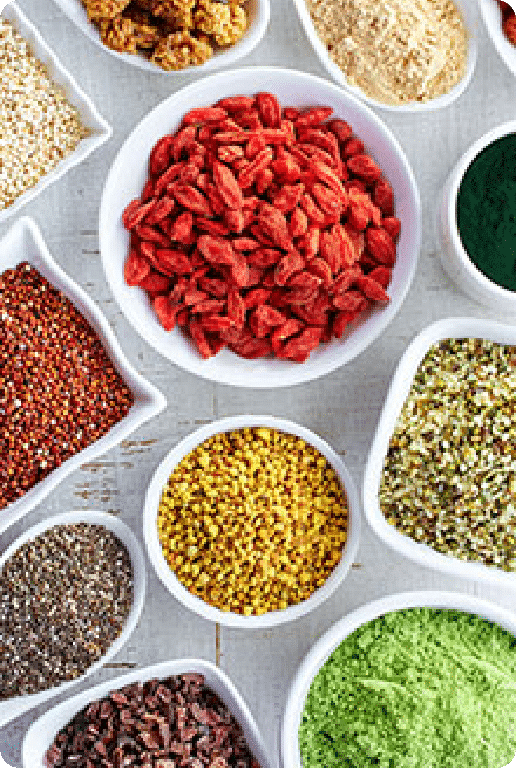GMO Foods, aka Genetically Modified Organisms, have recently received front-and-center focus in the food world. Big food, government, and a vibrant grassroots effort continue to argue about the need (and the lack of need) for products with GMO foods being clearly labeled for consumers. With hundreds of headlines, dozens of conflicting studies, and accusations in all directions, it’s easy to get lost in the fight. So, let’s make it simple.
- GMO foods are different than regular foods.
- GMO foods should be avoided.
- GMO foods need to be labeled.
Until government gets on board with the labeling effort (several US states are starting to show signs of this support), there are a few simple ways you can cut GMO foods from your diet. Here’s everything you need to know about GMO, in a nutshell. And my 5 Simple Tricks for No-GMO Shopping that’ll make your life simpler, easier, and healthier than ever. Because, if you wait around for someone else to take action for your health, you’ll be waiting forever.
What Are GMOs?
At it’s simplest, GMO stands for Genetically Modified Organism. Essentially, GMOs are organic items that have had their genetics tinkered with in some way. This can be any sort of living organism—yeast, insects, fish, plants, etc. When it comes to what we eat, GMO typically means “genetically modified crops” and/or “genetically modified food.” With the rise of widespread, for-profit agriculturalism, GMO crops and foods have become increasingly relied upon by farmers, the food industry…even us as consumers. Six of the biggest North American food staples are GMOs.
After all, when farming hundreds or thousands of acres, there’s a lot of crop to manage. And there’s lot of profit to be made. Lose a crop to virus, pests, or a season of bad weather, and millions of dollars are lost. Millions of people are potentially left without food, as well. So, GMOs were introduced to make crops more hearty, more resistant, faster-growing, more flavorful, more of whatever was needed to make the crop more likely to sell. Humans have been cross-breeding plants for tens of thousands of years, genetically modifying foods to create hybrids.
However, the modern version of cross-breeding GMO foods is far more than hybridization. It’s genetic mutilation. It’s specific, scientific alterations that change our food. Tweaks that change the entire makeup of the stuff we’re putting in our mouths.
My advice to you continues to be the same as always: EAT. REAL. FOOD.
Why Avoid GMO-Foods?
Much of the debate between supporters of not-labelling GMO foods declare a lack of scientific evidence against GMO foods. This lack of scientific evidence is essentially linked to a 20-year old USFDA policy. The policy put responsibility to test the safety of GMOs in the hands of the bio-tech companies creating them. Which meant, for 20 years, few if any studies at all were testing the safety of GMO foods.
Peer reviewed studies are now emerging, some of which indicates a potential link between GMO food consumption and an increase of allergies, among other possible related side effects. Of course, the real reason to avoid GMOs in the same reason Big Food companies are giving to keep them: there is little evidence.
Putting food into your body is more than stopping hunger. It’s fueling your body into the future. It’s creating actual cell-to-cell exchange. What you eat becomes part of you in a very literal way. With hundreds of pure, natural foods known to have fed humans for thousands of years, why gamble with the unknown?
Whole foods, unmodified, have created generations of healthy humans. We know they work. We know they heal. We know they are safe. So, let’s keep it simple and stick with what works. Nature has a way of providing us everything we need to thrive. Focus on pure foods, and your body will thank you.
In a Nutshell: Real Food Makes a Real Difference.
How to Avoid GMOs
The debate for GMO-labeling could take years. The fight will cost millions of dollars. It will take millions of hours. There will likely be hundreds of studies, accusations, and denials before any decision is made. But, you don’t have to get caught up in the complexity. Cutting GMO foods from your diet doesn’t require labels. It’s doesn’t have to be hard.
There are 5 easy shopping tricks to avoid GMO foods. I’ve created this simple checklist for you, with a few basic details that will help you hit the grocery store and grab what you need. These five tricks will help you feel fully confident that the food you pick is the sort of food you want to put in your body. This checklist will help you cut through the clutter of varied labels, tricky wording, and confusing options, making it easy to buy GMO-free foods. Even if there’s not a GMO-free label.
1. BUY RAW
You already know processed foods are no good for you. But, I’ll say it here again. Grab a box, and you’re probably gonna get a GMO. If you didn’t mix it, make it, or peel it, chances are there’s something unhealthy in it. So, steer clear of GMO foods first and foremost by buying foods in their raw, whole, unprocessed state.
2. BUY ORGANIC
Now, this one here can be tricky, because there are so many ways to sneak an organic label onto a product. The real trick here is, look for a 100% Organic label. The US and Canadian governments insist on foods labeled 100% Organic to be completely GMO-free. Buy 100%, Get 100%.
Bonus Trick: When shopping for foods, If it is a 4-digit number, the food is conventionally produced. If it is a 5-digit number beginning with an 8, it is GM. If it is a 5-digit number beginning with a 9, it is organic. Here’s one of my favorite infographics to show which foods are easiest to purchase GM-free.
3. BUY GRASSFED
When eating meat, always choose 100% grassfed beef. Many companies label their meat as grassfed, but feed herds GMO corn just before slaughter. If a cow has eaten GMO, and you’re about to eat the cow, you’re gonna get all GMO’ed up yourself.
Avoid this entirely by purchasing locally grown, 100% grassfed meats. You’ll support your local farmconomy, and give yourself top-quality nutrition, as well.
4. BUY LOCAL
More than half of all GM crops are produced in the United States. The large majority of these crops come from massive, industrial farms. A simple way to steer clear of GM crops is to join local co-op, CSA (Community Supported Agriculture) farms, and shop at local farmer’s markets.
Look particularly for organic, heirloom fruits and vegetables—plants grown from unmodified seeds. And, when you find farmer’s that prioritize organic, local farming, give them a high-five, and become their favorite customer.
5. GROW YOUR OWN
We’re all leading busy lives, so growing your own food may feel like a retro pipe-dream. But, it’s a dream worth considering. When you grow your own food, you’re in complete control. You choose the seeds, you pick the soil, you see what goes in, around, and on your food from day one.
For newbie gardeners intimated by the idea, several websites walk you through the process. It’s easier than ever to find the right plants, select the right varieties, and grow them in your own garden.
If the very thought of growing your own, entire garden feels overwhelming, start small. Plant a pot of hearty parsley or basil and keep it in your kitchen. After all, every bite counts when it comes to eating healthy!
Following the five tips above will help you steer clear of most GMO foods. There’s one other quick GMO-free shopping trick: knowing which foods are most likely to have been genetically modified.
More About GMO-Free Eating
I recently chatted with Jeffery Smith from Institute for Responsible Technology, the leading consumer advocate for non-GMO choices. Listen in as we chat about the dangers of GMO foods, and offer more insights on how to avoid them.









